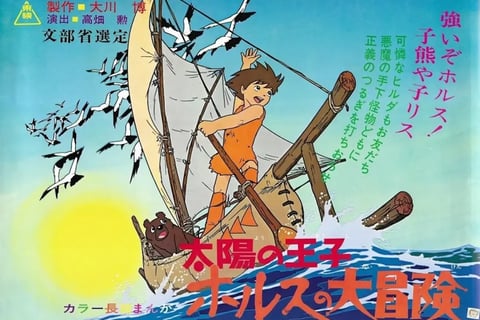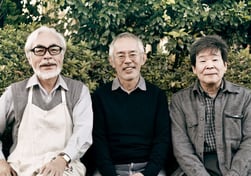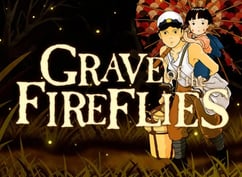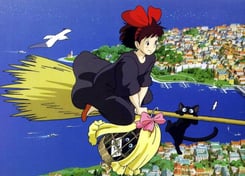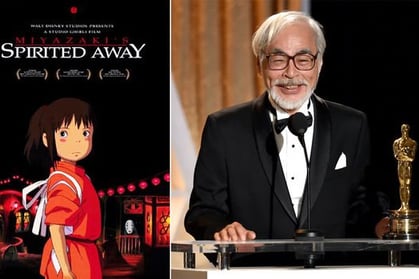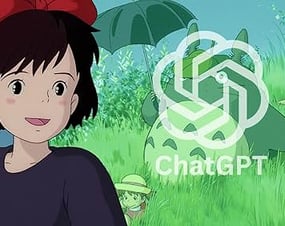Hayao Miyazaki: The Man Behind Studio Ghibli’s Magic
In the last few days, ChatGPT introduced the enchanting "Ghibli Transformation" feature, bringing the magic of Studio Ghibli’s iconic animation style to life. But do you know the man behind this timeless wonder? Meet Hayao Miyazaki—the creative genius who co-founded Studio Ghibli and redefined animation with his breathtaking visuals, emotionally rich characters, and profound storytelling. From the whimsical forests of My Neighbor Totoro to the mystical realms of Spirited Away, Miyazaki’s films explore human nature, environmentalism, and the beauty of imagination, leaving an indelible mark on the world of cinema.
MISCELLANEOUS
Deepita
3/31/20255 min read
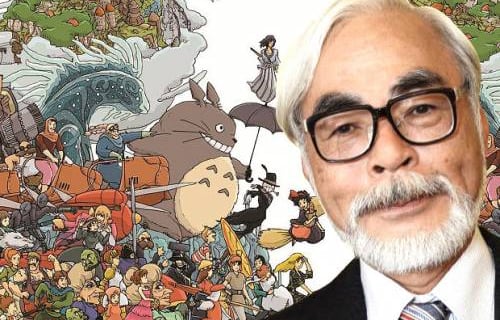

Few names in the world of animation carry as much weight as Hayao Miyazaki, the visionary mastermind behind Studio Ghibli. His creative genius revolutionized storytelling, capturing the hearts of millions worldwide. Known for his breathtaking visuals, emotionally rich characters, and profound messages, Miyazaki is far more than an animator—he is a storyteller whose films transcend age, culture, and time, leaving an indelible mark on cinema and imagination.
Early Life
Born on January 5, 1941, in Tokyo, Japan, Hayao Miyazaki grew up during the aftermath of World War II, an era marked by destruction and rebuilding. His early exposure to the devastation of war profoundly shaped his worldview, which later seeped into his films through recurring themes of pacifism, environmentalism, and human resilience. The scars of war left a lasting impression on Miyazaki, fueling his desire to tell stories of hope, compassion, and the delicate balance between humanity and nature.
Miyazaki’s fascination with animation began in his childhood, inspired by Osamu Tezuka’s "Astro Boy" and Tōei Animation films, which sparked his love for storytelling through visuals. His passion eventually led him to join Tōei Animation in the 1960s, where he quickly made a name for himself with his remarkable artistic vision and storytelling skills. It was there that he met Isao Takahata, his long time creative partner and future co-founder of Studio Ghibli. Their partnership would become one of the most influential in the history of animation.
During his time at Tōei, Miyazaki contributed to several projects, but it was The Great Adventure of Horus, Prince of the Sun(1968) that showcased his emerging directorial flair. Despite being credited as the chief animator, his creative influence on the film’s narrative, visual style, and emotional depth was undeniable. His knack for weaving rich, complex characters and morally nuanced themes began to take shape.
In the following years, Miyazaki continued to refine his craft, working on acclaimed TV series like Future Boy Conan (1978) and Lupin III: The Castle of Cagliostro (1979), his feature film directorial debut. Both projects demonstrated his imaginative world-building, fluid animation style, and ability to blend adventure with emotion—trademarks that would define Studio Ghibli’s future masterpieces.
The Birth of Studio Ghibli
In 1985, Hayao Miyazaki, along with Isao Takahata and Toshio Suzuki, co-founded Studio Ghibli, giving birth to what would become one of the most influential animation studios in the world. The name “Ghibli” was inspired by the Italian word for a hot desert wind, symbolizing the studio’s mission to blow a fresh breeze through the animation industry. Little did they know, their creative winds would spark a revolution in storytelling, redefining animation as a powerful medium for both children and adults alike.
Studio Ghibli’s first official film, Laputa: Castle in the Sky (1986), set the tone for the studio’s signature style—lush, hand-drawn visuals, imaginative worlds, and emotionally rich narratives. The film’s success laid the foundation for Ghibli’s growing influence. However, it was "My Neighbor Totoro" (1988) and "Grave of the Fireflies" (1988) that truly defined the studio’s artistic identity. Released as a double feature, the two films showcased Ghibli’s duality—on one hand, the heartwarming innocence and magic of Totoro; on the other, the harrowing realities of war in Grave of the Fireflies.
As the studio gained momentum, Miyazaki’s visionary direction propelled Ghibli to global recognition. Films like "Kiki’s Delivery Service" (1989) and "Porco Rosso" (1992) further cemented the studio’s reputation for creating emotionally profound, visually stunning, and thematically rich films.
What made Studio Ghibli stand out was its uncompromising commitment to hand-drawn animation. While the industry leaned toward CGI, Ghibli remained dedicated to the meticulous artistry of traditional animation, with each frame painstakingly crafted by hand. This dedication to detail, paired with universal themes of love, loss, nature, and human struggle, made Ghibli films resonate deeply with audiences around the world.
By the early 2000s, Studio Ghibli had become a global phenomenon, with films like "Spirited Away" (2001) winning the Academy Award for Best Animated Feature, solidifying Miyazaki’s place among the greatest filmmakers of all time. Studio Ghibli was no longer just an animation studio—it had become a cultural treasure, creating timeless masterpieces that continue to inspire generations with their magic, emotion, and wonder.
ChatGPT vs. Hayao Miyazaki
In recent days, ChatGPT’s "Ghibli Transformation" feature has wowed users by bringing Studio Ghibli’s signature animation style to life. With a simple prompt, AI can now generate whimsical, hand-drawn-inspired visuals, mimicking the essence of Miyazaki’s beloved films. While this technological feat is undoubtedly impressive, it raises an interesting question: Can AI-generated art ever truly capture the soul of a creative genius like Hayao Miyazaki?
At its core, Miyazaki’s art is deeply personal. His films reflect his life experiences, emotions, and philosophical outlook, weaving profound human truths into fantastical worlds. Movies like Spirited Away and Princess Mononoke are not just stories—they are emotional expressions of love, loss, and the fragility of nature, influenced by Miyazaki’s own pacifist beliefs and childhood memories of post-war Japan.
In contrast, ChatGPT’s creativity is algorithmic. It generates art based on patterns, datasets, and existing styles, producing visuals that resemble Miyazaki’s aesthetic but lack the intimate human touch. While AI can replicate the visual beauty, it struggles to capture the emotional nuance and narrative soul that makes Miyazaki’s work timeless.
While ChatGPT can replicate Ghibli-inspired art, it cannot replace Miyazaki’s creative genius. Instead, AI could serve as a collaborative tool—assisting animators with concept art or enhancing workflows. However, the heart and soul of storytelling will always belong to human creators like Miyazaki, whose empathy, imagination, and lived experiences breathe life into their work.
The true magic of Hayao Miyazaki lies not in the aesthetic alone but in the emotional storytelling, philosophy, and human essence woven into each frame—a depth that AI cannot replicate.
